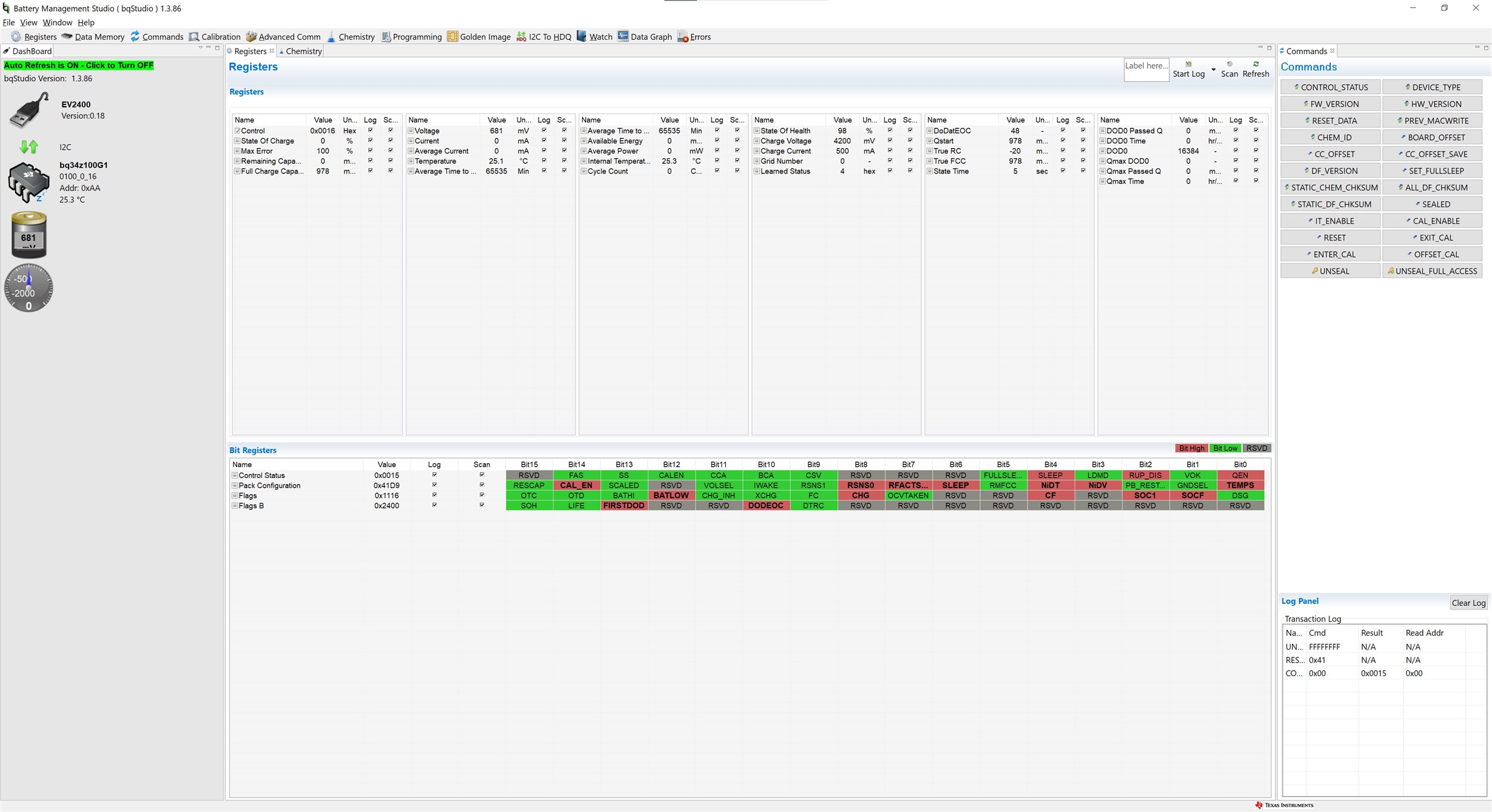Other Parts Discussed in Thread: BQSTUDIO, EV2400
Hello,
I'm trying to get this eval board working to evaluate this fuel gauge for our purposes.
I can communicate to the eval board using bqStudio and can read data out. I have a 4S lithium ion battery connected across BAT+/- with the GND of the battery also connected to PACK-.
I have clicked on the UNSEAL_FULL_ACCESS command button and I believe that worked. Both FAS and SS bits are green (LOW) in the control status register (see copied image below).
On the chemistry tab, I select ID 1630 (Lion-Polymer 4.4V) but when I try to program the chemistry by clicking the button at the bottom I get error 1470.
What is going on?



